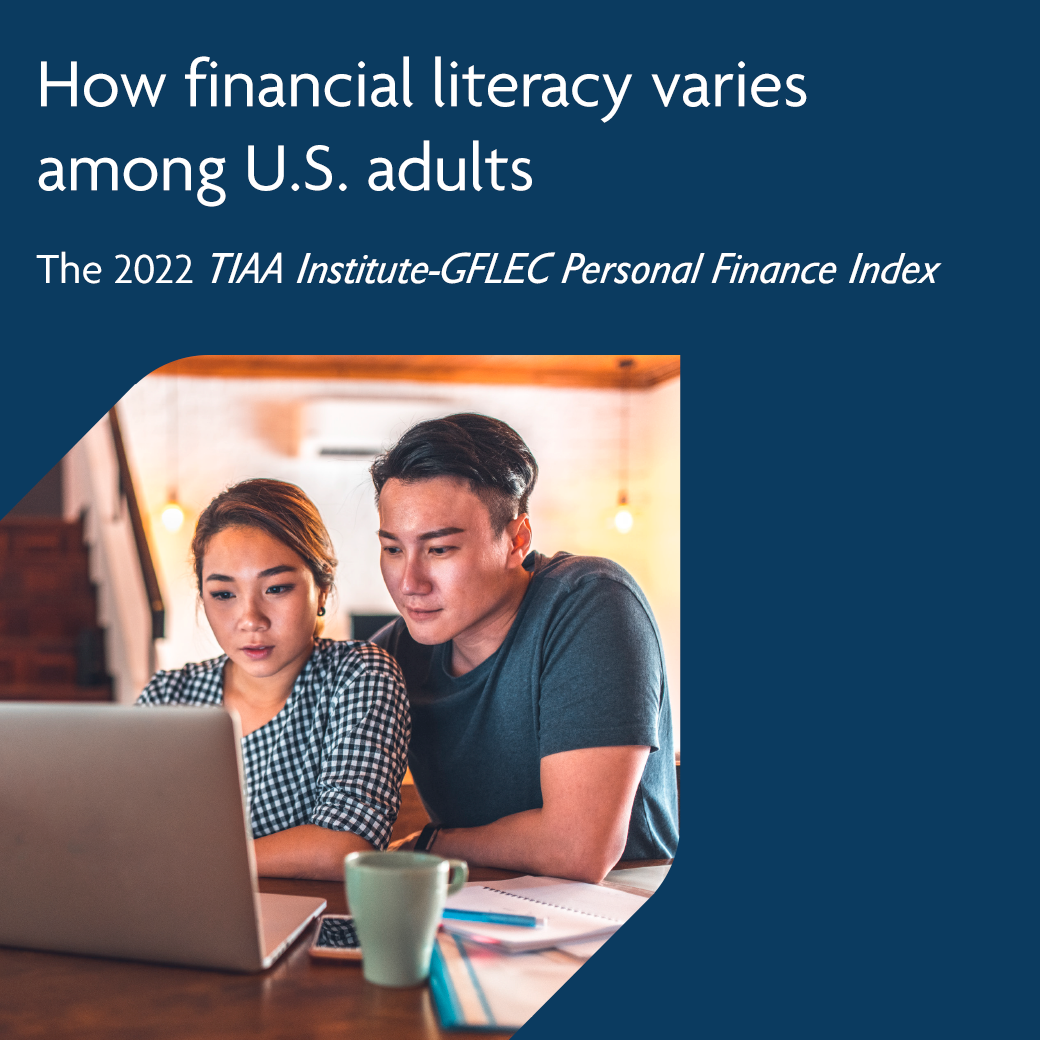How financial literacy varies among U.S. adults
Financial literacy is knowledge and understanding that enable sound financial decision making and effective management of personal finances. An individual's financial well-being depends, at least in part, on his or her financial literacy.
Summary
The annual TIAA Institute-GFLEC Personal Finance Index (P-Fin Index), now in its sixth year, provides a robust measure of overall financial literacy across the U.S. adult population, plus a nuanced analysis of functional knowledge in eight areas. The survey also includes indicators of financial well-being.
Key Insights
- On average, U.S. adults correctly answered only 50% of the P-Fin Index questions in 2022. This figure has hovered in the 50% range each year of the index thus far.
- "Comprehending risk" is again the area in which functional knowledge tends to be lowest.Financial literacy levels among Asian Americans, oversampled here for the first time, tend to be equal to that of Whites.
- Financial literacy tends to be low within each of the five generations comprising the U.S. adult population, but particularly so among those in early adulthood.
- Lower financial literacy generally translates into lower financial well-being as demonstrated along dimensions such as debt constraint and financial fragility.





